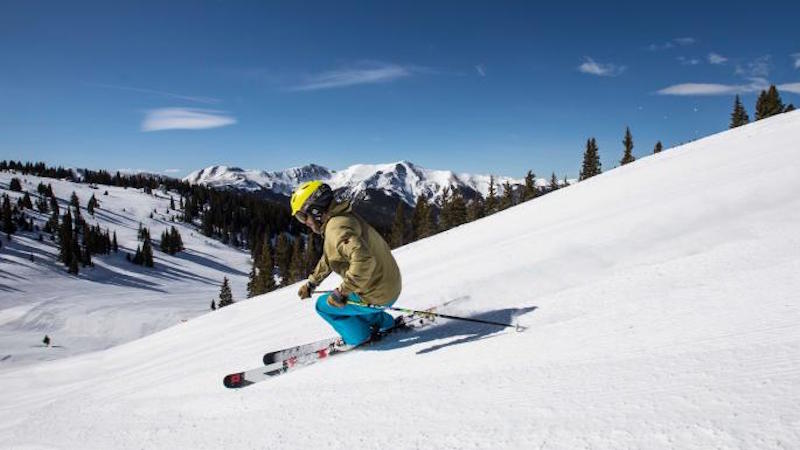Moving from snowplough to parallel skiing is a scary thought for many but it does make your life easier and makes you cooler on the slopes. Once you master parallel skiing you can start to ski faster, turn quicker and also turn heads as you ski swishly past the mountain side bar.
While the thought of moving to parallel skiing is daunting it is important to move away from the safety of the ‘pizza slice’ and get those skis straight as soon as possible. It is also an essential stage to get to grips with if you are looking at completing a ski instructor course. In this post we will give you some tips on how to ski parallel and become ‘a proper skier’.
A parallel turn has 3 phases:
- 1. Initiating the turn
- 2. Edge change
- 3. Finishing - by turning through and away from the fall line.
1. Initiating the turn
To initiate the turn, you should extend upwards and lean forwards so that your hips are over your downhill ski. This should be a smooth motion and as you move this way you will find that the tips of your skis will start to tip downhill and your weight will transfer over both of your skis.
If your weight is equally split between both of your skis you will find that your skis and body should be travelling in the same direction. It is vitally important that you don’t use your upper body to try and match your skis. Your skis should drop to match your upper body. Once your body is lined up with the skis, you should briefly leave your skis flat and travel straight - at this point you are ready for an edge change.
2. Edge change
Once the turn has been initiated and the skis are travelling straight ahead, you're ready to change edge. When you are skiing parallel you should always be skiing on the ‘same’ edge of each ski. When making a turn, the edges need to be changed at the point where the skis are travelling straight forward and not sliding to either side.
Although this sounds a bit daunting this is not something you need to worry about, as you should do this naturally at the correct time anyway. It is always good to know about the edge change as it has implications on your balance which is talked about in the next section:
A note on balance:
Parallel turning is essentially the art of moving your weight from one to ski to another. When you are just about to enter the turn, you should bend your knees and transfer your weight onto the outside ski (e.g. If you are going to turn left, this would be your right ski).
Once you have completed the turn you can transfer your weight back over both of your skis evenly. If your practice this movement a few times you should be able to lift your inside ski. If you struggle with this then you will find that you don’t have your weight over the outside ski whilst you are ‘in’ the turn. As the skis turn across the slope it is important to let them slide sideways. This helps you choose the shape of your turn and also helps control your speed.
3. Finishing the turn
Once you have controlled your speed, go across the hill in your desired direction by keeping your weight on the downhill ski and keeping in the leaning-forward position.
This helps you control the angle that you want your skis to be at and also how much slide you want your ski to have. Now all you have to do is to continue traversing across the hill until you are ready to do your next turn and repeat all the steps again!
Top tip:
When turning, if you feel you are going too fast try to turn the tips of your skis back up with hill so almost doing a C turn and you will slow down before starting your new turn. This will help you feel more in control as you will be going at a speed which you are comfortable with.
4. Try a Ski Instructor Course
A great way to push your ability to the next level, is through completing a ski instructor course, where you’ll learn the best ways to upgrade your technique, from the best teachers. You will also learn how to coach others, giving you a far greater understanding of how to develop your own skiing. - If you can teach others to improve, you can definitely further your skill and technique! But, if you're already comfortable at skiing parallel and think teaching others might be something you'd enjoy, take a look at our ski instructor courses too. SnowSkool offers ski instructor courses in in Canada, New Zealand and France!
Related Ski Instructor Course and Ski Improvement Content:
SnowSkool also runs snowboard instructor courses in Canada, France and New Zealand, if you fancy turning your hand to boarding?!
For more information about ski or snowboard instructor courses have a look at these Snowskool blog articles to give you a further feel for the job: Where are they now? Ex-Snowskoolers and Which is the best instructor course for me?
Check out some of our other blog articles on improving your skiing, to help you move up from beginer level to intermediate:
